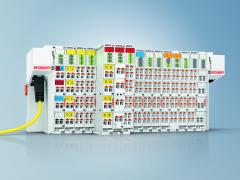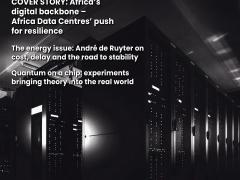Hemant Harie, Group Chief Technology Officer at DMP SA, discusses Kubernetes in South Africa, and some of the finer points businesses should be considering.

As South African businesses rapidly embrace Kubernetes for managing containerised applications, the emphasis on cloud resilience is evolving. Known as the "operating system for the cloud," Kubernetes provides agility and scalability but also brings challenges in data protection.
Kubernetes’ automation features significantly streamline cloud workload management. Tools like auto-scaling, self-healing and rolling updates reduce the need for constant manual oversight. It is designed to help teams maintain consistency across environments while improving reliability and speed of deployment. The result is a system that encourages operational efficiency and agility at scale.
Enterprises are recognising that the architecture is purpose-built for scale, automation and other key capabilities that often come up in discussions about Kubernetes. One consistent observation is that the availability of secure, standardised container images is making deployments far more stable and predictable. This, in turn, allows businesses to build with greater confidence and focus on growth rather than firefighting infrastructure issues.
Evolution of the virtual machine layer
At its core, Kubernetes essentially represents the evolution of the virtual machine layer into a more dynamic and resilient container orchestration environment. It is no longer just about spinning up infrastructure; it is about intelligently managing workloads across distributed environments.
With organisations increasingly operating across on-premises setups, hybrid configurations and cloud-native architectures, the ability of Kubernetes to seamlessly move workloads efficiently, predictably and at scale is incredibly valuable. This flexibility is crucial for customers who are navigating complex cloud journeys.
However, Kubernetes does introduce complexities such as the need for holistic cloud resilience. Traditionally, data protection strategies were built around the application layer; data would be backed up from within the application itself, and that was generally sufficient. But Kubernetes has completely transformed this approach.
With its modular architecture, built on containers, pods, persistent volumes, namespaces and various controllers, data no longer lives in a single, easily targeted place. Protecting data now requires a deep understanding of how these components interact and how the application state is distributed across the Kubernetes cluster.
Protecting the Kubernetes environment
This shift brings significant complexity. To implement an effective protection and recovery strategy, it’s no longer enough to back up data alone; the Kubernetes environment itself also needs to be protected. That means preserving the cluster state, configuration data, and metadata. Recovery is not just about bringing back the information but also about rebuilding the application context so workloads can resume as intended.
Having the right tools, and more importantly, the right understanding of Kubernetes' internal mechanics, makes all the difference because there are many moving parts in Kubernetes. While data remains the cornerstone of any solid protection strategy, the game has changed significantly within the Kubernetes ecosystem.
Kubernetes is unique in its reliance on a distributed architecture. Beyond data itself, key components in the control plane, like schedulers, controllers and API servers, play a critical role in orchestrating the entire environment. If these elements are not protected or restorable, the consequences can be significant.
Core control plane components
For example, losing a worker pod or a piece of data might be manageable, but being unable to restore core control plane components, such as the scheduler that governs resource allocation and workload distribution, could render the entire cluster partially or even entirely non-operational. That disrupts automation, high availability and scalability, which are what Kubernetes is built on.
Kubernetes has become integral to production environments because of its scalability, high availability and ability to bridge on-premises and cloud workloads. Protecting Kubernetes workloads is not just about backing up data; it is about understanding the nuances of live, distributed architectures. From control plane configurations to ephemeral pods and persistent volumes, every layer needs consideration.
As a result, vendors are being pushed to evolve and offer protection plans that accommodate container-native workflows and integrate with more traditional paradigms like the 3-2-1 rule – three copies of data, two stored offsite, one in the cloud.
This is where the discipline of data management strategy becomes indispensable. Kubernetes cannot be treated as a silo. The smart move is to embed it within an organisation’s broader resilience and recovery posture; not to reinvent the wheel, but to ensure the wheel still turns in this new terrain.













